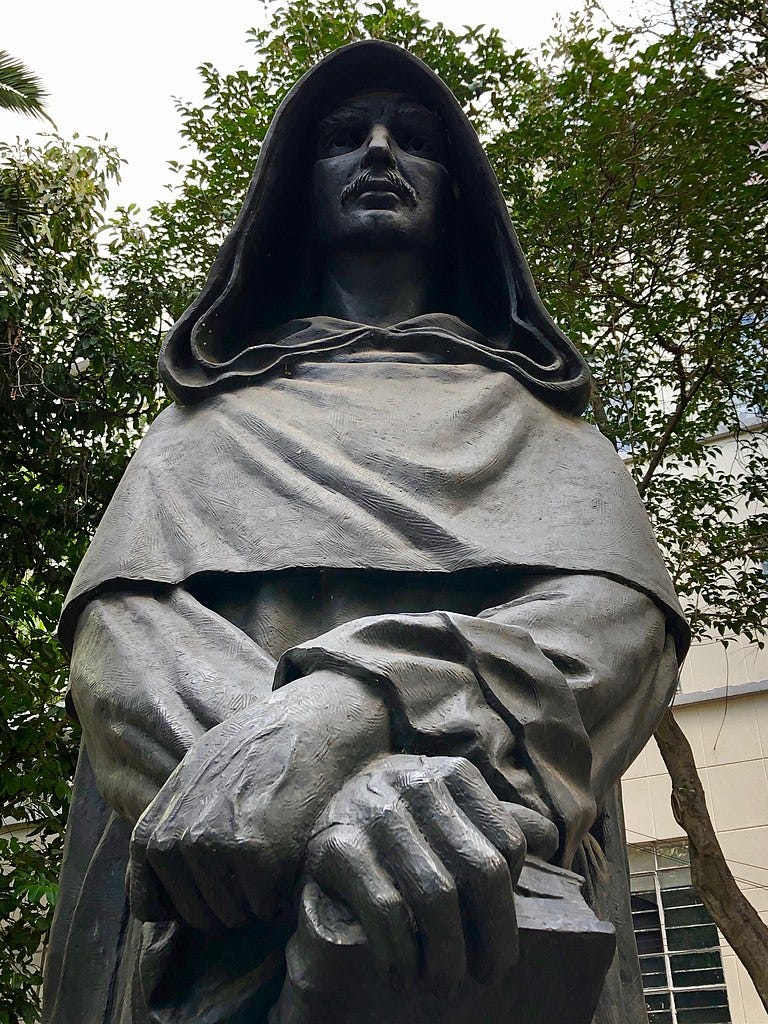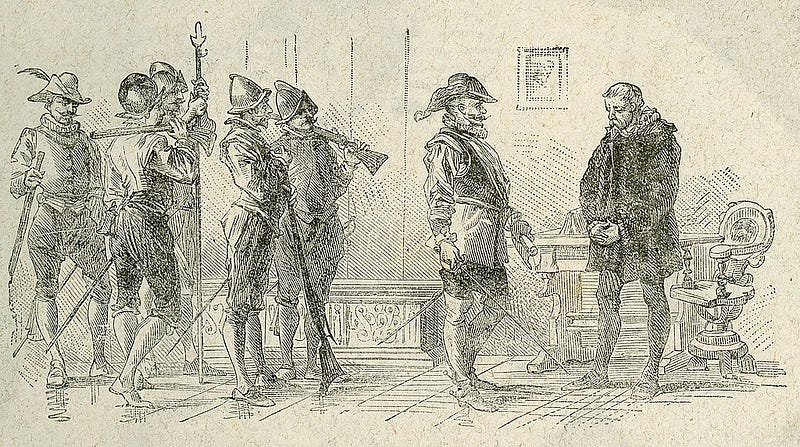# The First Martyr of Science: Giordano Bruno's Tragic Tale
Written on
Chapter 1: An Unyielding Spirit
The history of intellectual thought is replete with individuals whose radical ideas have led them to face dire consequences. Among these figures, Galileo stands out, having spent his final years under house arrest due to the Roman Inquisition's scrutiny, ultimately passing away in 1642. Yet, a less recognized but equally significant figure is Giordano Bruno, who suffered a far more brutal fate. Just thirty-three years prior to Galileo’s house arrest, Bruno was convicted of heresy and executed by fire. His groundbreaking ideas laid the groundwork for modern cosmology, but they also led to his premature death.
A Scholar's Journey
Giordano Bruno was born in early 1548 in Nola, Italy, to a soldier named Giovanni Bruno. His upbringing was humble, lacking the comforts of wealth. From a young age, Bruno exhibited a solitary nature, often immersed in books, which indicated an early intellectual inclination. At the age of fourteen, he was sent to Naples for education, a bustling city where he likely developed skills that would aid him in later life. Adapting to urban living proved essential for the young Bruno.
By seventeen, he had joined the prestigious Dominican Monastery of San Domenico Maggiore, a center of learning attended by nobility. It was here that Bruno honed his skills in etiquette, scholarly rigor, and the radical ideas that would later define his legacy.

Bruno became a priest by the age of twenty-four and earned his doctorate in theology three years afterward. He was celebrated for his intelligence and remarkable memory, yet his independent mindset stirred trouble, leading to whispers of Inquisition investigations. These rumors likely stemmed from his outspoken defense of controversial ideas. When it became apparent that he was under suspicion, he fled to Rome in 1576, embarking on a journey across Europe that took him to Switzerland, France, and England.
During his travels, Bruno sustained himself by teaching philosophy, theology, and memory techniques, all while seeking a stable academic position. Despite coming close on several occasions, circumstances thwarted his efforts.
Inexplicably, he returned to Italy in 1591, a choice that would seal his fate. Some believe he was invited back by a Venetian nobleman, Giovanni Mocenigo, while others think he was overconfident. Regardless of the reason, he began teaching Mocenigo, but their relationship soured.
A Trial of Ideals
In 1592, Mocenigo turned against Bruno, reporting him to the Venetian Inquisition. This betrayal may have been motivated by dissatisfaction with Bruno's teachings or his radical philosophical ideas. Whatever the cause, Bruno was swiftly arrested and put on trial.

Though the charges against him were severe, Bruno initially navigated the trial successfully until the Vatican intervened, demanding his extradition to Rome. The Venetian Inquisition was notably more lenient than their Roman counterparts, a reality that Bruno would soon experience firsthand.
The Roman trial progressed slowly, but eventually, a list of eight heretical beliefs attributed to Bruno surfaced, compiled by Robert Bellarmine, who would later pursue Galileo's case. Despite Bruno's vigorous defense of his ideas, the Church deemed them too radical to accept. Faced with the choice to renounce his beliefs or be branded a heretic, Bruno chose the latter, leading to his death sentence. On February 17, 1600, he was executed by fire.
Radical Ideas
Bruno's concepts were revolutionary for his time. He posited that the universe is infinite, filled with countless stars similar to our Sun, each potentially hosting its own planets and intelligent life forms. He also introduced an atomic theory, suggesting that everything is composed of tiny particles, including God. These groundbreaking ideas clashed with Church doctrine, and Bruno steadfastly refused to recant, believing firmly in their truth. Centuries later, many of his theories would find validation in modern science.
The video "There Was No First Human" explores the evolution of humanity and challenges the idea of a singular origin point. This discussion ties in with Bruno's belief in an infinite universe.
The video "Who Was The First Person to Die in a Car Crash?" delves into the history of transportation and mortality, offering a modern perspective on historical events and their implications, reminiscent of Bruno’s tragic fate.